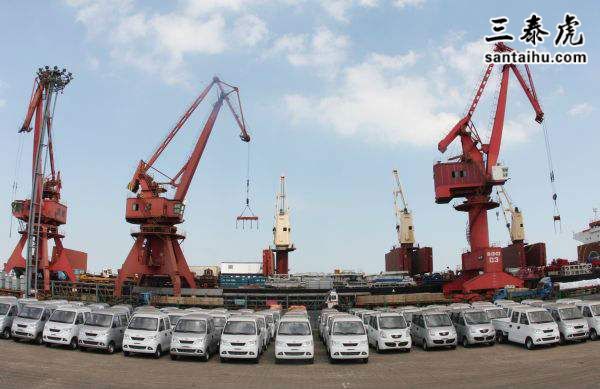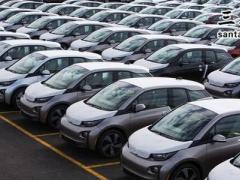Quora: 印度人是否高估了本国GDP增长率
Are Indians overestimating the country’s GDP growth rate?印度人是否高估了本国的GDP增长率? Quora评论翻译:外文:https
Are Indians overestimating the country’s GDP growth rate?
印度人是否高估了本国的GDP增长率?
Quora评论翻译:
外文:https://www.quora.com/Are-Indians-overestimating-the-country%E2%80%99s-GDP-growth-rate
KiranKumar Uppoor, studied at Fatima High School
The GDP growth rate is currently a result of mathematics not due to any policy or organic growth. Sample this just by shifting the base calculation year to 2011-2012 ( The worst possible year in the last 10 years) .The GDP growth rate looks better by 1.9% as compared to the earlier base calculation year (2004-2005). Basically if the same parameters were to be used than the GDP figures would be 4.9% not 6.8% as currently claimed. Needless to say 4.9% indicates that there is no change what so ever as compared to the earlier regime. This does not augur well to the current government . The CSO currently quotes the revised/more convienent 6.9% .
Hence this is disputed by economists.
目前GDP增长率是通过数学公式计算出来的,不是由任何政策左右的也不是有机增长的结果。以2011-2012年(过去10年里最糟糕的一年)为例,GDP增长率较早前的基础计算年(2004-2005年)高出1.9%。如果使用相同的参数,GDP数据将是4.9%,而不是目前宣称的6.8%。4.9%表明,与以前相比,没有任何变化。这对现任政府来说不是好兆头。中央统计局目前采纳了修正后的6.9%。因此,经济学家对此提出了质疑。
Ironically MODI govt 's chief economic advisor aravind subramanium had this to say
"On Feb. 3 in an interview to the Business Standard newspaper, he said: “I am puzzled by the new GDP growth numbers. The revised numbers show GDP growth rose from 4.7% to 5.1% for 2012-13 and from 5% to 6.9% for 2013-14. This means acceleration in GDP growth of 1.9 percentage points in 2013-14, just by comparing the new numbers across time.”
This is “mystifying,” he added, because “these numbers, especially the acceleration in 2013-14, are at odds with other features of the macro economy.”
讽刺的是,2月3日莫迪政府的首席经济顾问aravind subramanium在接受《商业标准报》采访时表示:“我对新的GDP增长数据感到困惑。修正后的数据显示,2012年至2013年,GDP增速从4.7%升至5.1%,2013年至2014年,从5%升至6.9%。这意味着2013年至2014年GDP增速加快了1.9个百分点。这是“令人困惑的,因为这些数据,尤其是2013年至2014年的增速,与宏观经济的其他特征不符。”
Also "Ruchir Sharma, head of emerging markets and global macro at Morgan Stanley Investment Management, wrote in a blog for The Times of India, that the “dramatic upward revision of the GDP growth rate is a bad joke, smashing India’s credibility and making its statistics bureau a laughing stock in global financial circles.” Sharma also wrote that this makes India look bad even compared to China, which many analysts have long suspected of massaging GDP figures to show steady growth.
摩根士丹利新兴市场和全球宏观投资管理主管Ruchir Sharma在《印度时报》发表的一篇博客中写道:“大幅向上修正的GDP增长率是个拙劣的玩笑,降低了印度的可信度,使其统计局成为全球金融界的一个笑柄。Sharma还写道,即便与中国相比,印度看起来也不咋地。长期以来,许多分析人士一直怀疑中国操纵GDP数据以显示稳定增长。
Since the current revised estimates indicates growth , the on ground indicators does not support this number. for example
Agriculture- The growth has been a dismal , lower than projected. Ashok Gulati has explained it Economic Survey 2015: Growth in agriculture remains a worry, says Ashok Gulati .
虽然目前修正后的数据显示增长,但实际指标并不支持这个数字。例如,农业增长惨淡,低于预期。阿肖克•古拉蒂在《2015年经济调查-农业增长仍令人担忧》中有作具体解释。
Similarly ,manufactering sector has slowed down
Corporate debt is at its all time high
More than 8.8 lakh Crore projects are still stalled
Perception is not reality , and the reality is far from the perception. As of now there is lots and lots of word play , and economy is represented by smart mathematics. Like they say if all i had to do is drag the cursor along the excel row......I would be a billionare in no time
公司债务正处于历史高位,超过8.8万亿卢布的项目仍处于停滞状态。
理想很丰满,现实很骨感。到目前为止,有很多文字游戏,经济是通过机智的数学算法呈现的。就像他们说的,如果我所要做的就是沿着excel行拖动光标,那我很快就会成为亿万富翁。
Vaibhav Bajpai, Assistant Engineer at UJVN Limited (2017-present)
Most of the answers seem to be supporting the current GDP figures which has been calculated by taking newer base year and newer factors into account. But the recent reports by CSO and apprehensions of various economist has definetly raised questions over the over rated growth rate and over optimistic economic survey.
大多数回答似乎都支持当前的GDP数据,这些数据是根据较新的基准年和因素计算出来的。但中央统计局最近的报告和各大经济学家的忧虑,无疑对过高的增长率和乐观的经济调查提出了质疑。
For example the manufacturing sector has shown a growth of 8.1% but at the same time the index for industrial production ( 2.4%) and export sector has taken a dip or has not shown significant increase ; which is quite contrary in nature. And the eyebrows have already been raised. The centre for monitoring indian economy has reported discrepancies in the CSO’s statistics. the word discrepancy here just means the anamolies or something which can not be understood in the whole process of computing GDP(GVA now). In 2014–2015 the discrepancy value was 0.1% when reported GDP was 7.2% while in the year 2015–2016 the value rose to 2.4% and the value reported was 7.6%( which is huge)
例如,数据显示制造业增长8.1%,但同期的工业生产指数(2.4%)和出口有所下降或没有明显增长,这在本质上是完全相反的。印度经济监测中心报告了中央统计局统计数据的“出入”。这里的“出入”一词只是指在计算GDP(GVA)的整个过程中无法理解的异常现象。2014-2015年,公布的GDP为7.2%,出入为0.1%,2015-2016年,公布的GDP为7.6%,出入上升至2.4%(非常大)。
There are some positive predictions for the future year(2016–2017)too but considering the poor health of banking sector, marginal increase in oil price , higher correaltion with the world economy and unrealistic and over optimistic reasons to support them makes the task of bringing indian economy back on track an uphill task for the government.
虽然对2016 - 2017年有一些积极的预测,但考虑到银行业的状况不佳,油价小幅上涨,与世界经济关联更加密切,以及不切实际和过于乐观的态度,印度政府要想把印度经济拉回正轨是一项艰巨的任务。
Sarthak Gulati, Central banker, Ex- Civil servant, Economist, Thinker
India's GDP growth rates are one of the most important yet least reliable parameters for policy making. They are even less reliable when used as a means of determining political discourse.
印度的GDP增长率是政策制定中最重要但也是最不可靠的参数之一。当它们被用作决定政治话语权的手段时,就更不可靠了。
First, there are constant revisions of GDP data and these revisions are significantly different from initial estimates. Actual GDP numbers (second revised estimates) for a year are released only after a lag of two years.
首先,GDP数据不断被修正,而修正后的数据与最初的估值相差甚远。实际GDP数据(经过二次修正的估值)在两年之后才公布。
If provisional estimates for 2017–18 are set at 7 per cent, and even if they are revised to 4 per cent or 10 per cent in 2020, it will have no relevance for policy making nor will it matter to the people at large.
如果对2017-2018年的GDP增长率暂估为7%,即使在2020年将其修正为4%或10%,这也与政策制定无关,也不会对普通大众产生影响。
Second, there are claims of overestimation/underestimation due to base changes. People and policymakers can use new series to understand trends only when they have the old series data for the new base.
其次,由于基数的变化,有些人断言高估或者低估了。民众和政策制定者只有在拥有新基数的旧系列数据时,才能使用新系列数据来了解趋势。
India clocked 10.08 per cent growth under Manmohan Singh's tenure: Report
在曼莫汉•辛格任内,印度实现了10.08%的增长。
A few days back, finally we got the old series data for 2011–12 base year. Now it will have limited relevance for both the policy makers and the people of the country.
几天前,我们终于得到了2011-2012基准年的旧系列数据。但现在它对政策制定者和人民的意义有限。
In light of this data, despite the claims of high growth by current leaders, GDP growth rates in last 4 years are lower than average of 10 years under the previous government.
根据这些数据,尽管现任领导人宣称经济将高速增长,但过去4年的GDP增长率低于上届政府执所执政10年的平均水平。
Overestimation or underestimation is only important when we are comparing growth across countries or comparing (wrongly) growth among two different base year series.
只有当我们比较不同国家的增长率或比较两个不同基准年的增长率时,高估或低估才显得重要。
First, GDP growth rates should never be compared across countries. A country five times our size growing a per cent slower than us, doesn't make us a economic superpower.
首先,不应拿不同国家的GDP增长率进行比较。即使我们的增长率比一个经济规模是我们五倍的国家快10%,也不意味着我们就是一个经济超级大国。
Second, now that we have old data, What must be done is comparison of GDP growth with potential growth rate of the country.
其次,现在有了旧的数据,我们必须做的是将GDP增长与潜在增长率进行比较。
Either you say, productivity of labour/capital has reduced. Or amount of labour/ capital resources available have reduced. Or the export potential of the country has worsened. If neither of this is true, there is no reason, why we can't achieve double digit growth rates again.
要么劳动力/资本的生产率降低了,要么可用的劳动力/资本资源减少了或者出口潜力已经恶化。如果这两种说法都不成立,那我们没有理由不能再次实现两位数的增长率。
To answer the question, India sometimes underestimates its GDP, it sometimes overestimates its GDP but it always misestimates its provisional estimates of GDP.
Note: All views are personal and do not represent my organization.
我的回答是,印度有时低估GDP增长率,有时高估GDP增长率,但它总是估错GDP增长率的暂估值。注:以上为个人观点,不代表我的组织。
Balaji Viswanathan, has a management degree and teaches business courses.
Originally Answered: Why are many economists skeptical about India's recent growth rate claims?
Nobody likes change. Any change brings suspicion and skepticism [a great book on this is "Who moved my cheese?]. When India moved to a more GDP calculating mechanism, of course there were these impediments to change. Especially when the growth numbers make the economy look good when the world economy is in doldrums, there will be suspicions. Especially when the growth numbers look high after a new government rode to power, there will be skepticism.
为什么许多经济学家对印度最近的增长率持怀疑态度?
没人喜欢变化。任何变化都会带来质疑和怀疑(一本关于这方面的巨著是《谁动了我的奶酪?》)。当印度转向一种更注重GDP计算的机制时,肯定会面临障碍。特别是当世界经济低迷,而这些经济增长数据却让印度经济在看起来不错时,人们就会产生怀疑。尤其是当新政府上台后,经济增长数据看起来很高时,人们便会产生怀疑。
We should worry more when nobody raises questions. That would mean nobody cares [do you really care about the growth metric Somaliland or South Sudan uses?]
没人提出质疑,我们才应该更加担心。没人质疑意味着没有人在意你(你会在意索马里兰或南苏丹采用的增长指标吗?)
A few weeks ago there was a big hullabaloo that the RBI chief doesn't trust the GDP numbers. Rajan quickly clarified that he was misquoted - Never doubted new GDP numbers, says Raghuram Rajan - but you care only about those stories that fit your prejudice.
几周前,传言印度央行行长Rajan 不相信GDP数据,引发了一场大骚动。拉詹很快澄清说,他的话被错误引用了,他从未质疑过新的GDP数据。
A lot of people raised questions on shrinking PMI etc, but don't want to see the fact that service sector growth is extremely good. I have more aspects on whether Indian economy looks good or not: With fall in imports & exports, low PMI, rising inflation, and depreciating rupee; how can the Indian Government still expect GDP growth at 7.4%?
很多人对不断降低的采购经理人指数提出了质疑,但他们却不愿看到服务业增长迅猛的事实。关于印度经济我有更多的看法:进出口下滑、采购经理人指数低、通胀上升、卢比贬值,印度政府怎么还能指望GDP增长7.4%?
Plenty of business observors have also now grown comfortable with the new metric - India's Change In GDP Calculation Method Seems Highly Sensible - Other countries are also using better methods to calculate now - http://thebricspost.com/after-in...
如今,许多商业观察人士也对新的衡量标准感到满意,印度GDP计算方法的改变似乎非常明智,其他国家也在使用更好的方法进行计算——http://thebricspost.com/afterin.。
Any major change will take years to be fully understood and integrated. For now, almost all major global organizations like the IMF, OECD and World Bank are comfortable using India's calculations.
任何重大变化都需要数年时间才能被充分理解和融合。目前,包括国际货币基金组织、经合组织和世界银行在内的几乎所有主要全球组织都乐于使用印度的计算方法。
Kunal Jain
Okay so india’s GDP growth is quite good right but do you know the major factors for our gdp growth
We all are very proud of our GDP growth
India being one of the most progressive country when it comes to Growth amd development statistic
But at what expense ?
The goods we produced all are provided by nature
The chemicals are deployed into the rivers
Paol river of india is 4th most polluted river on earth why ?
Cause The leather factories around it easily deployed their wastage in the river
Why does the govt not taking actions against it ?
Because it provides the government Capital which eventually Leads To increase in our GDP
Now the most shocking fact is India has used around 20 thousand crore rupees for cleaning ganga river
still Its far from being a clean river
But the fact that the money we used for cleaning rivers and afforestation is added to growth of our GDP
Yes you heard it right
Money we are using to clean river increases our GDP rate and the same river is polluted by Industries Which is also increasing our GDP
its like a cycle
Industries pollutes the river
Gdp increases
Then Govt invest money in cleaning them hence river deveolepment so There by,
GDP increases
印度的GDP增长率相当不错,但是你知道我们GDP增长的主要因素吗?
我们都为我们的GDP增长感到自豪。在增长和发展统计方面,印度是最进步的国家之一。但代价是什么呢?我们生产的所有产品都是由大自然提供的,这些化学品排入到了河流中,恒河是地球上第四大污染最严重的河流,为什么?
因为它周围的皮革工厂都把废料排入河里,为什么政府不采取行动?因为它们为政府提供资本,最终带来GDP增长。现在最令人震惊的事实是,印度用了大约2000亿卢比清理恒河,但还远没达到干净的程度。事实上,我们用于清理河流和植树造林的资金也计入了GDP的增长。是的,你没听错,我们用于清理河流的资金提高了GDP增长率,同样的河流被工业污染,这也增加了我们的GDP
这就像一个循环,工业污染了这条河,促进GDP增长,然后政府投资清理河流,进一步促进GDP增长。.
Swathi Ramesh Kumar, works at Salem, Tamil Nadu, India
These GDP forecasts are all hypes propagated by elitist rulers to fool the people and they are not actully real and correct.
Govts own nothing, govts collect taxes aggressively from people to expand their control over the private property of citizens.
In a free market, trade does not happen between nations rather it takes place between individuals who involve in voluntary transactions(exchange of goods and services).
Any intervention of govt into economy will distort the markets decourage competition and hamper free trade.
A country which has high level of economic freedom does not care about GDP statistics and other "statist economic projections".
这些GDP预测都是精英统治者为了愚弄人民而炒作出来的,它们不是真实的,也不是正确的。政府一无所有,从人民身上征收重税以扩大对公民私有财产的控制。在自由市场中,贸易不是发生在国家之间,而是发生在参与自愿交易(商品和服务交换)的个人之间。政府对经济的任何干预都会扭曲市场竞争,阻碍自由贸易。一个拥有高度经济自由的国家并不关心GDP统计和其他“统计经济预测”。
Siddharth Pathak
The reason is simply due to the fact that every single country fudges its numbers. The mighty United States to the rice rich Khmer nation of Cambodia, all fudge and "smooth" their numbers. India is no different.
The reason why India rises above the page to catch people's attention is that it's growth strikes out in a time when the entire developed world + China are slowing down. That region is caught in the abyss of too much debt and too little growth - the combination of which causes the slowing growth to feel like a downright recession.
As India is the fastest growing (as per the "fudged" numbers) major economy now, the eyes are on the country and naturally they are going to be poking their eyes on it
原因很简单,因为每个国家都在捏造数据。从强大的美国到盛产大米的高棉国家柬埔寨,都在捏造数据,印度也不例外。
印度之所以能脱颖而出引起人们的注意,是因为在所有发达国家和中国的经济都在放缓之际,印度经济却出现了增长。这些地区深陷债务过多、增长过少的深渊,这两者的结合导致增长放缓,让人感觉像是彻头彻尾的衰退。
由于印度是目前增长最快的主要经济体(根据“捏造”的数字),人们的目光都集中在这个国家上,自然会对它指指点点。
Narasimha Reddy Donthi, policy observer
As I mentioned before GDP calculation have all the elements of wrongdoing, genuine and deliberate. Not only me, RBI Governor himself is saying that.
I have not seen an explanation of how Indian GDP growth rate is rising despite global commodity price fall and many other international negative economic trends. Within India, unemployment is on the rise. Inflation is not going under. Government is not willing to help in reduction of fuel prices. There is no plausible reason for such refusal.
There is some internal hollowness in Indian economy, which is not being revealed by GDP-linked economic indicators. Recent change in the method of GDP has also not helped. Wonderfully, despite severe drought conditions in 10 States, water shortages across India, and plummeting of cultivation, our GDP growth rate is consistent. Economists and politicians attribute it to 'robustness and strength'. But, there is no dissection of this robustness and strength. I would be happy if I can come across such an explanation.
正如我之前提到的,GDP计算包含了所有不当行为的因素,真实的和故意的。不仅是我,印度央行行长本人也这么说。
在全球大宗商品价格下跌,国际经济趋势放缓之际,印度GDP增速时如何上升的?我没有看到任何解释。在印度,失业率正在上升,通货膨胀没有下降,政府不愿意帮助降低燃料价格。没有合理的增长理由。
印度经济内部存在一些空洞,GDP相关经济指标并未揭示这一点。近期改变GDP算法也无济于事。令人惊奇的是,尽管10个邦出现了严重的干旱,各地出现了水资源短缺,耕地锐减,但我们的GDP增度却是始终如一。经济学家和政界人士将其归因于经济“强劲”。但是,没有对此进行剖析。如果能看到这样的解释,我会很高兴的。
Anonymous
No, it is just other countries, especially China, are using an old method of GDP computing which tends to yield lower growth rate than India. In other words, India is not overestimating, but the claim that India grow faster than others, especially China, is likely to be an overestimation.
不,是其他国家,尤其是中国,在使用一种传统的GDP计算方法,这种方法倾向于算出比印度低的增长率。换句话说,印度并没有高估自己的GDP增长率,但声称印度经济增长快于其他国家(尤其是中国)的说法可能是有点高估自己了
版权声明
我们致力于传递世界各地老百姓最真实、最直接、最详尽的对中国的看法
【版权与免责声明】如发现内容存在版权问题,烦请提供相关信息发邮件,
我们将及时沟通与处理。本站内容除非来源注明五毛网,否则均为网友转载,涉及言论、版权与本站无关。
本文仅代表作者观点,不代表本站立场。
本文来自网络,如有侵权及时联系本网站。
阅读:
-
1
चाइना में रेडी और ठेले Local shops in china || L...
- 2
- 3
- 4
- 5
- 6
- 7
- 8
- 9
- 10
-
1
चाइना में रेडी और ठेले Local shops in china || L...
- 2
- 3
- 4
- 5
- 6
- 7
- 8
- 9
- 10











